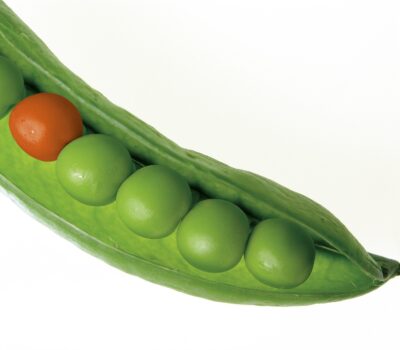


Whilst The Frog and Tomato sounds like a fantastic pub name, it is in fact related to productivity, at least in this article. Productivity is needed everywhere, and all the time. It’s needed today, as I write this blog. It was needed yesterday, when I did my laundry. And I’ll need it again in five minutes when I start looking at videos of pets being reunited with their owners. Procrastination isn’t an option in the grown-up world, although productivity shouldn’t always be seen as an authoritarian demand to slave away for the best output. Many people in leadership and management roles are in charge of their own productivity and the productivity of others whilst having to manage the mental wellbeing for everybody involved. The recent pandemic had a massive impact on productivity and people had to adapt to being productive at home. For me, productivity is getting what I need to get done, on time and to a good standard. It does not mean maximum and constant output in a certain time scale as humans are not machines (yet 👀). Education staff are some of the best multitaskers, but often that is out of necessity. In this article, we discuss what factors affect productivity and the tools that you can use to help you feel more productive.
If you see productivity as one-dimensional, then productivity is output divided by time. But output in this equation is not including variable factors such as quality and importance. I could write 20 blogs in a day, but all of them are poor quality. I could write two quality blogs in a day but all of them are irrelevant and not what I needed to do. The one thing that remains constant is time. We have deadlines that we have to hit and sync up with others, especially when other people’s output relies on our own. The two things to think of first are time and importance. A teacher needs to submit marks for 20 students by the end of the week but also needs to submit marks for 30 students the week after. They also need to deal with parents complaining about what is being served in the canteen. The teacher had also planned to spend time looking at videos of pets being reunited with their owners. Using the Time Management Matrix, they would decide how to approach the tasks. The four tasks that the teacher needs to do can be put inside this Matrix.
You can also use this similar method if you would like to adapt this technique for your students.
“If it’s your job to eat a frog, it’s best to do it first thing in the morning. And if it’s your job to eat two frogs, it’s best to eat the biggest one first.”
Mark Twain
As we all know, eating amphibians is a big part of teaching, but this quote inspired a theory that claims you should try and get the challenging and least appealing task done first. If you have a daunting task and you put it off until the end of the day, then you will spend all day worrying about it and be less productive as a result. If you do the hardest and biggest task first, then you can be happy with the knowledge that the day will only improve. When I was teaching, I often found that I would rather use any free periods I had to do admin tasks than stay late in the evenings. It helps with the issue of procrastination and meant that I was not eating into my own personal time. There’s already an unfair expectation for teachers to work unpaid overtime, often on the weekends and on holidays, so using techniques to reduce procrastination is one way to increase productivity and reduce the time spent on tasks.
Usually, my advice would be to add fresh parsley, although this technique is not about making a tomato pasta sauce. The Pomodoro Technique was created by Francesco Cirillo in the 1980s as a tool to help him focus on his studies. He used a tomato-shaped cooking timer to measure 25 minute intervals where he focused on his study. After 25 minutes, he gave himself a 5 minute break, and every four cycles, he gave himself a 15-30 minute break. This is a fantastic method for people that get distracted easily and try to unproductively multitask. As somebody with ADHD, I often use timing techniques to provide uninterrupted focus, especially when I have deadlines. You can use any digital timer, or app, as long as you are not distracted by it.
In Japanese, ‘Kai’ means change, and ‘Zen’ means good. The Kaizen concept is to make lots of small incremental changes at a time to improve effectiveness and productivity over time. Often we are expected to make big improvements over a short period of time, but that can be like expecting a four-year-old to play for England after a few months of training. Making small changes at a time can help avoid stress and burnout, especially helpful at a time when mental health in schools is already an issue. Making big changes can often be overwhelming and it can be hard to break out of habits or routines straight away. In a teaching environment, students do not always react well to big changes in the teachers’ methods and behaviours. I found that I had to slowly become more disciplined in the classroom when my role changed and I had more responsibility for the students. The students were used to a certain level of discipline and would have found it unfair had I suddenly punished them for something I was not being strict about before, such as catching them with their phones. An example of this is by the last term they all used their phones less and focused on their work more, which is always a goal in teaching. The technique should also be taught to students to show them that steady and consistent effort is much better than last-minute cramming and rushed assignments.
Making small changes also allows for A/B testing, where you can make changes to see if things improve and compare to the previous method, but they are small enough changes for you to revert back if the new changes were not working out. In some instances, I had to present the same lesson to different classes, and found myself making small changes to my delivery and content each time based on what went well in the previous class I had taught. This method is heavily linked to CPD (Continuous Personal Development) as the main aim is to improve yourself in a teaching environment.
‘Track the past, organise the present, and plan for the future’.
No this is not a quote from a Doctor Who episode where they go to The Planet of Diary Management. This is where you can track all your tasks, schedules, reminders, appointments etc. There are many apps you can use this for but often a physical diary can help as it minimises the distraction of using a phone.
The Kanban System was developed by an engineer to support the manufacturing process but is also a great productivity tool that can be used in many situations and environments. The process is to create a visual board of progress for a project so you can see what point various parts of the project or plan are at. This can be done digitally but a simpler way to do it is to have a physical space and use post-its, pins, Blu Tak etc. It is great if you need to organise work across an entire team, and can be used as a more generalised version of a project planner. You can use it to track many things, such as development, progress, and priorities.
I mean it sounds simple right? I am renaming my job as the ‘Getting money to fund all the cheese I eat Technique’. However reductionist the title sounds, there is a logical process to follow to actually get things done. Here are some steps:
In education, there often isn’t much time to catch your breath, and it can feel that you might not have time to use the steps above, but you have to trust the process. I think it can be summarised in a shameless self-quote below:
“If you start saving the minutes, then the hours will look after themselves”
Arjun Kotecha (I mean I did think of the sentence myself)
I hope this helps with productivity. Being productive makes you feel much calmer and can do wonders for your wellbeing. It helps you get on top of things and achieve your goals. Although remember to know your limit and not sacrifice your own mental health, teacher burnout is very common and can be avoided.
🐸 No frogs were harmed in the making of this article. 🐸